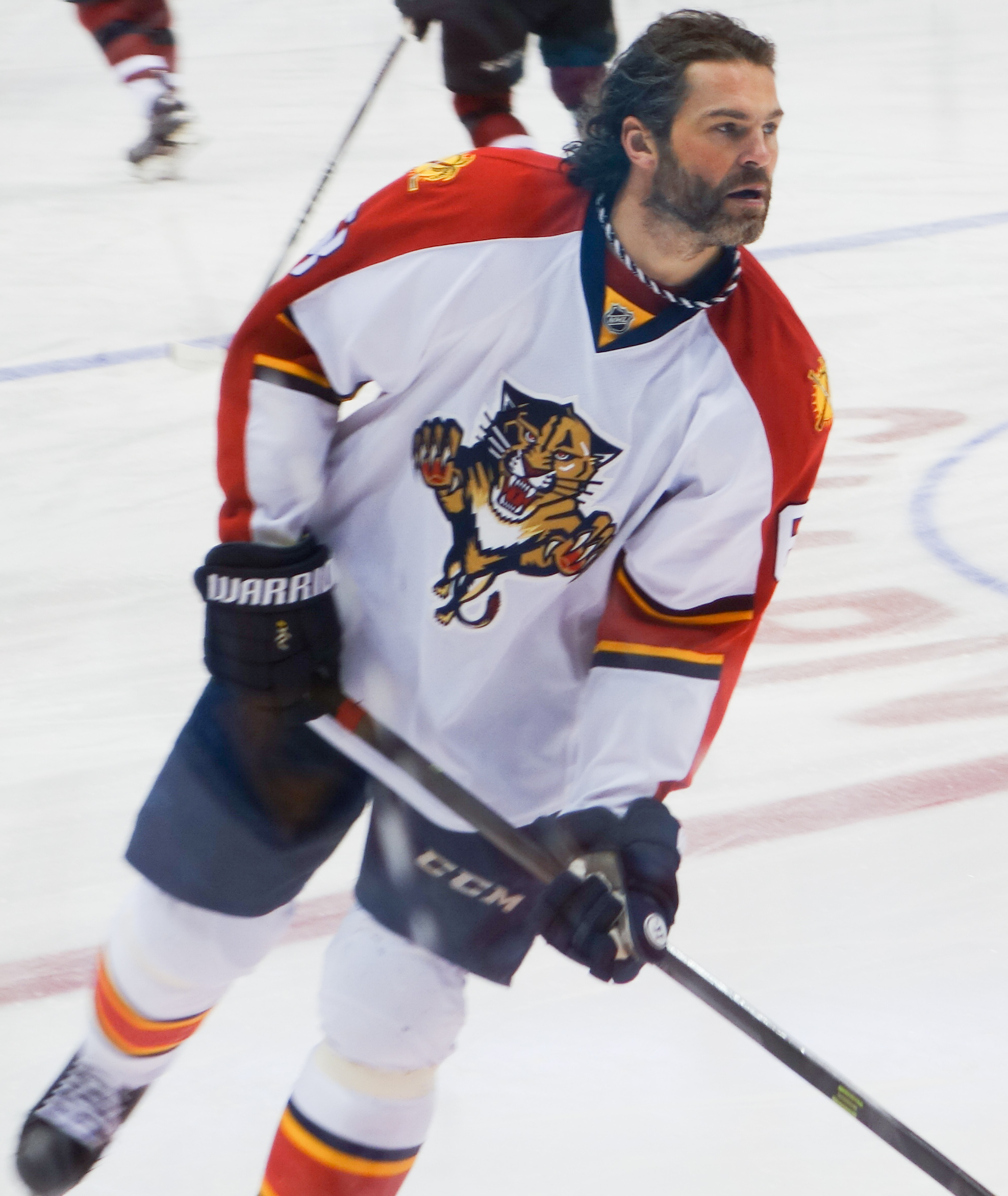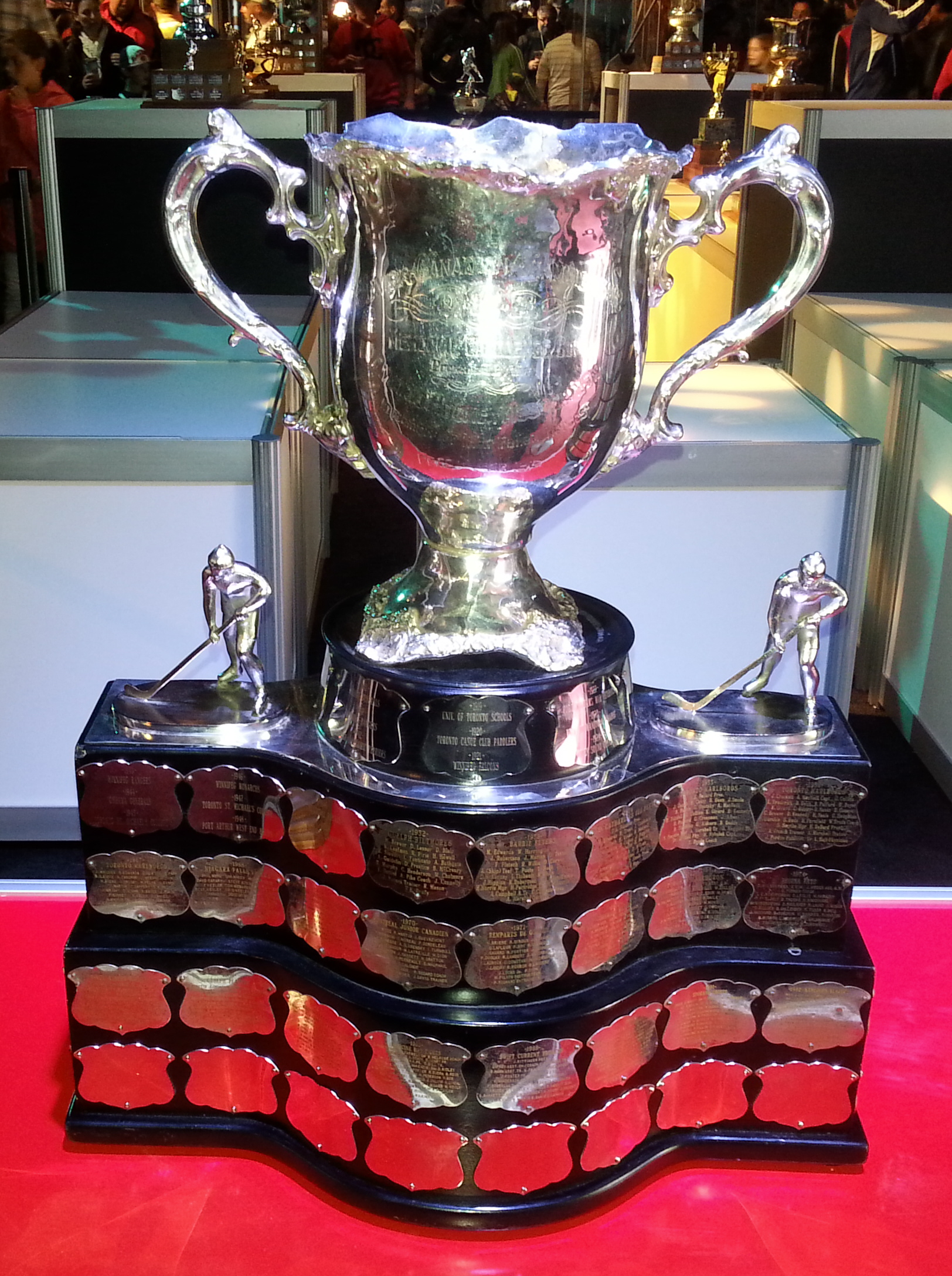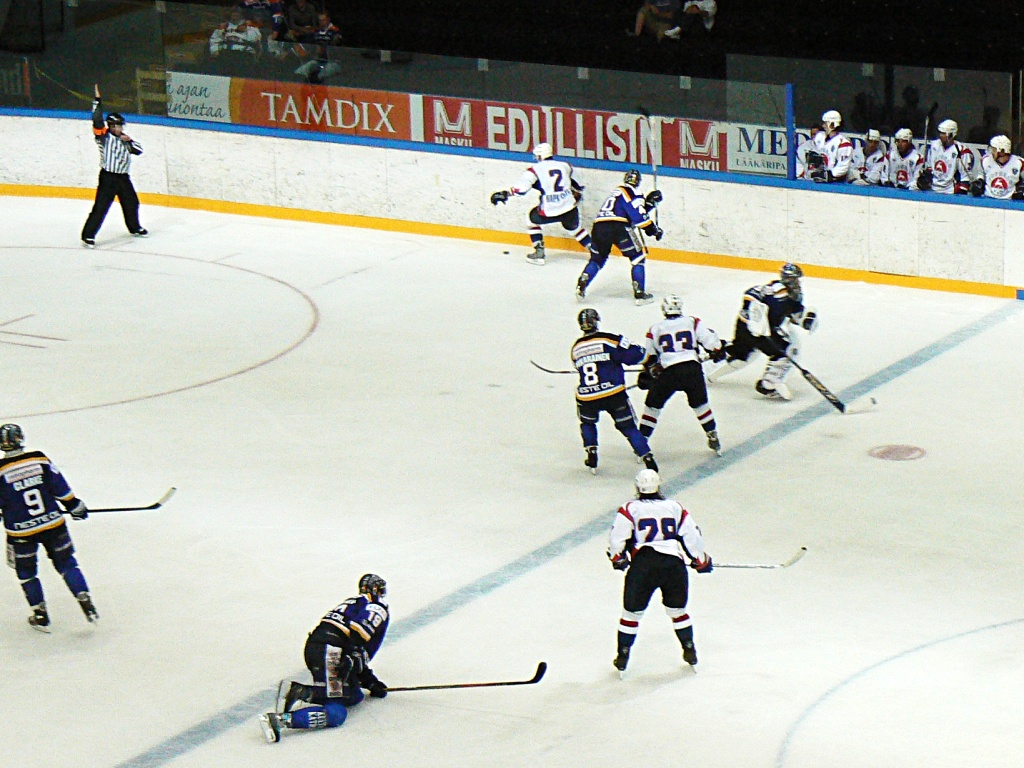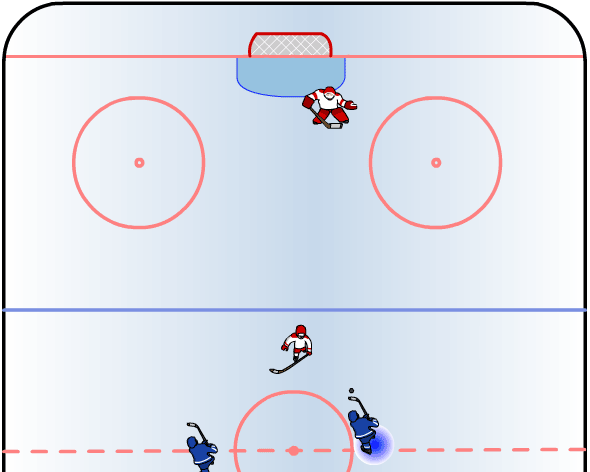|
Glen Brydson
Glenn Warren "Swampy" Brydson (November 7, 1910 — December 9, 1993) was a Canadian ice hockey right winger who played eight seasons in the National Hockey League (NHL) for the Montreal Maroons, St. Louis Eagles, New York Rangers and Chicago Black Hawks between 1930 and 1938. After leaving the NHL Brydson played five seasons seasons were spent in the International American Hockey League, which became the American Hockey League, where he played for the New Haven Eagles, Indianapolis Capitals, Springfield Indians, and Pittsburgh Hornets. After briefly playing senior hockey, he retired in 1942. Brydson is interred at Park Lawn Cemetery Park Lawn Cemetery is a large cemetery in the Etobicoke district of Toronto, Ontario, Canada. It currently has around 22,000 graves. It is managed by the Park Lawn Limited Partnership, which also runs five other cemeteries in Toronto. The cemetery ... in Toronto. Career statistics Regular season and playoffs References External links * {{DEFAU ... [...More Info...] [...Related Items...] OR: [Wikipedia] [Google] [Baidu] |
Winger (ice Hockey)
Winger, in the game of ice hockey, is a forward position of a player whose primary zone of play is along the outer playing areas. They typically flank the centre forward. Originally the name was given to forward players who went up and down the sides of the rink. Wingers generally have the least defensive responsibilities out of any position on the ice, however they are still tasked with defensive duties such as forechecking duties or covering the point in the defensive zone. Nowadays, there are different types of wingers in the game — out-and-out goal scorers, checkers who disrupt the opponents, and forwards who work along the boards and in the corners. Often a winger's precise role on a line depends upon what type of role the other winger plays; usually lines will have one more goal-scoring oriented winger and one winger more focused on playing the boards, checking and passing the puck to others to take shots (if a larger player, he will sometimes be called a "power forward ... [...More Info...] [...Related Items...] OR: [Wikipedia] [Google] [Baidu] |
Regular Season
In an organized sports league, a typical season is the portion of one year in which regulated games of the sport are in session: for example, in Major League Baseball the season lasts approximately from the last week of March to the last week of September. In other team sports, like association football or basketball, it is generally from August or September to May although in some countries - such as Northern Europe or East Asia - the season starts in the spring and finishes in autumn, mainly due to weather conditions encountered during the winter. A year can often be broken up into several distinct sections (sometimes themselves called seasons). These are: a preseason, a series of exhibition games played for training purposes; a regular season, the main period of the league's competition; the postseason, a playoff tournament played against the league's top teams to determine the league's champion; and the offseason, the time when there is no official competition. Preseason In ... [...More Info...] [...Related Items...] OR: [Wikipedia] [Google] [Baidu] |
1933–34 IHL Season
The 1933–34 IHL season was the fifth season of the International Hockey League, a minor professional ice hockey league in the Midwestern and Eastern United States and Canada Canada is a country in North America. Its ten provinces and three territories extend from the Atlantic Ocean to the Pacific Ocean and northward into the Arctic Ocean, covering over , making it the world's second-largest country by tot .... Six teams participated in the league, and the London Tecumsehs won the championship. Regular season Playoffs Final ''Round Robin'' External linksSeasonon hockeydb.com {{DEFAULTSORT:1933-34 IHL season 1933 in ice hockey 1934 in ice hockey ... [...More Info...] [...Related Items...] OR: [Wikipedia] [Google] [Baidu] |
1933–34 NHL Season
The 1933–34 NHL season was the 17th season of the National Hockey League (NHL). Nine teams each played 48 games. The Chicago Black Hawks were the Stanley Cup winners as they beat the Detroit Red Wings three games to one. League business The New York Americans introduce new sweaters. The team's home uniform uses the word 'Americans' across the front with white stars over a blue area around the shoulders with red and white stripes below the wording. The road uniform is white with a shield logo. There are sleeves and shoulders are blue with a horizontal red stripe at the bottom of the sweater. The team is the second NHL team to have two sets of uniforms, after the Toronto Maple Leafs. Regular season The Ottawa Senators, having enough problems, now had to deal with holdout Cooney Weiland. He was sold to Detroit, strengthening the Red Wings. The Senators continued to lose, but won a few games when they signed an amateur named Max Kaminsky to centre the Roche brothers Desse and Ea ... [...More Info...] [...Related Items...] OR: [Wikipedia] [Google] [Baidu] |
1932–33 NHL Season
The 1932–33 NHL season was the 16th season of the National Hockey League (NHL). Nine teams each played 48 games. The New York Rangers beat the Toronto Maple Leafs three games to one for the Stanley Cup. League business After sitting out for a season due to financial difficulties, the Ottawa Senators rejoined the NHL. The Philadelphia Quakers never rejoined the NHL after sitting out the 1931–32 season. Detroit Falcons were renamed as the Detroit Red Wings. Although the Montreal Maroons had Flat Walsh, Dave Kerr and Normie Smith for goal, they were interested in acquiring Chuck Gardiner of Chicago. James Strachan offered $10,000 plus one of his goalkeepers, but there was no deal. Billy Coutu, expelled from the NHL in 1927, was reinstated to the NHL, but never returned. Rule changes This season, the NHL started allowing a substitute to serve penalties for goaltender's penalties. The NHL now required a captain or alternate captain to be on the ice at all times. Regular s ... [...More Info...] [...Related Items...] OR: [Wikipedia] [Google] [Baidu] |
1931–32 NHL Season
The 1931–32 NHL season was the 15th season of the National Hockey League (NHL). The Ottawa Senators and Philadelphia Quakers suspended operations, leaving eight teams to play 48 games each. In the Stanley Cup Finals, the Toronto Maple Leafs swept the New York Rangers in three games to win the franchise's third Stanley Cup championship. League business At the September 26, 1931, NHL meeting, the requests of the Philadelphia Quakers and the Ottawa Senators to suspend their franchises for the season were granted. The eight remaining teams divided up the Ottawa and Philadelphia players, whose contracts were leased from Ottawa and Philadelphia. (The Quakers would not return) The players went to other teams, but their contracts were intended to revert to the original clubs. Ottawa received an offer of $300,000 for the team, on the condition that it could move to Chicago and play in the new Chicago Stadium but the owners of the Chicago Black Hawks refused to allow the new team withi ... [...More Info...] [...Related Items...] OR: [Wikipedia] [Google] [Baidu] |
1930–31 NHL Season
The 1930–31 NHL season was the 14th season of the National Hockey League. Ten teams played 44 games each. The Montreal Canadiens beat the Chicago Black Hawks three games to two in the best-of-five Stanley Cup Finals for their second consecutive Stanley Cup victory. League business Art Ross bitterly complained about the Stanley Cup final setup. His team had been vanquished in two consecutive games by the Montreal Canadiens in 1929–30. As a result, the Board of Governors decided to make the final a best-of-five series. The Great Depression was starting to take its toll on the NHL. In attempts to solve financial problems, the Pittsburgh Pirates moved to Philadelphia and became the Philadelphia Quakers, but there was nothing about the team to win games or fans. It was intended that the team stay in Philadelphia only until a new arena was built in Pittsburgh. The arena was never built, and the team folded after only one season in the new city. The state of Pennsylvania would be ... [...More Info...] [...Related Items...] OR: [Wikipedia] [Google] [Baidu] |
Montreal Hockey Club
The Montreal Hockey Club of Montreal, Quebec, Canada was a senior-level men's amateur ice hockey club, organized in 1884. They were affiliated with Montreal Amateur Athletic Association (MAAA) and used the MAAA 'winged wheel' logo. The team was the first to win the Stanley Cup, in 1893, and subsequently refused the cup over a dispute with the Montreal Amateur Athletic Association. The club is variously known as 'Montreals', 'Montreal AAA' and 'Winged wheel' in literature. The team played in several early ice hockey leagues, including the Amateur Hockey Association of Canada from 1886 until 1898, winning its championship seven times. The team competed in purely amateur leagues until 1906. After two seasons of playing with professionals, the club left its league, the Eastern Canada Amateur Hockey Association to continue playing in amateur competition. It would go on to win the Allan Cup in 1930, the successor of the Stanley Cup as the trophy given to Canadian amateur hockey champio ... [...More Info...] [...Related Items...] OR: [Wikipedia] [Google] [Baidu] |
Ontario Hockey Association
The Ontario Hockey Association (OHA) is the governing body for the majority of junior and senior level ice hockey teams in the Province of Ontario. The OHA is sanctioned by the Ontario Hockey Federation along with the Northern Ontario Hockey Association. Other Ontario sanctioning bodies along with the OHF include the Hockey Eastern Ontario and Hockey Northwestern Ontario. The OHA control 3 tiers of junior hockey; the "Tier 2 Junior "A", Junior "B" , Junior "C", and one senior hockey league, Allan Cup Hockey. In 1980, the Ontario Major Junior Hockey League vacated what was known as Tier I Junior "A" hockey. The league is now known as the Ontario Hockey League. Although it is not a charter member of the OHA, the OHL is affiliated with the OHA and Ontario Hockey Federation. History Founding The OHA was founded in 1890 to govern amateur ice hockey play in Ontario. This was the idea of Arthur Stanley, son of Frederick Stanley, 16th Earl of Derby, Lord Stanley, then Governor Genera ... [...More Info...] [...Related Items...] OR: [Wikipedia] [Google] [Baidu] |
Penalty (ice Hockey)
A penalty in ice hockey is a punishment for an infringement of the rules. Most penalties are enforced by sending the offending player to a penalty box for a set number of minutes. During the penalty the player may not participate in play. Penalties are called and enforced by the referee, or in some cases, the linesman. The offending team may not replace the player on the ice (although there are some exceptions, such as fighting), leaving them short-handed as opposed to full strength. When the opposing team is said to be on a ''power play'', they will have one more player on the ice than the short-handed team. The short-handed team is said to be "on the penalty kill" until the penalty expires and the penalized player returns to play. While standards vary somewhat between leagues, most leagues recognize several common varieties of penalties, as well as common infractions. The statistic used to track penalties is called "penalty minutes" and abbreviated to "PIM" (spoken as single w ... [...More Info...] [...Related Items...] OR: [Wikipedia] [Google] [Baidu] |
Point (ice Hockey)
In ice hockey, point has three contemporary meanings. Personal stat A point is awarded to a player for each goal scored or assist earned. The total number of goals plus assists equals total points. The Art Ross Trophy is awarded to the National Hockey League (NHL) player who leads the league in scoring points at the end of the regular season. Team stat Points are also awarded to assess standings (or rankings). Historically, teams were awarded two points for each win, one point for each tie and no points for a loss. Such a ranking system, implemented primarily to ensure a tie counted as a "half-win" for each team in the standings, is generally regarded as British and/or European in origin and as such adopted by the National Hockey League which was founded in Canada where leagues generally used ranking systems of British origin. Awarding points in the standings contrasts with traditional American ranking systems favored in sports originating within the United States where today the m ... [...More Info...] [...Related Items...] OR: [Wikipedia] [Google] [Baidu] |
Assist (ice Hockey)
In ice hockey, an assist is attributed to up to two players of the scoring team who shot, passed or deflected the puck towards the scoring teammate, or touched it in any other way which enabled the goal, meaning that they were "assisting" in the goal. There can be a maximum of two assists per goal. The assists will be awarded in the order of play, with the last player to pass the puck to the goal scorer getting the primary assist and the player who passed it to the primary assister getting the secondary assist. Players who gain an assist will get one point added to their player statistics. Despite the use of the terms "primary assist" and "secondary assist", neither is worth more than the other, and neither is worth more or less than a goal. Assists and goals are added together on a player's scoresheet to display that player's total points. Special cases If a player scores off a rebound given up by a goaltender, assists are still awarded, as long as there is no re-possession by t ... [...More Info...] [...Related Items...] OR: [Wikipedia] [Google] [Baidu] |





